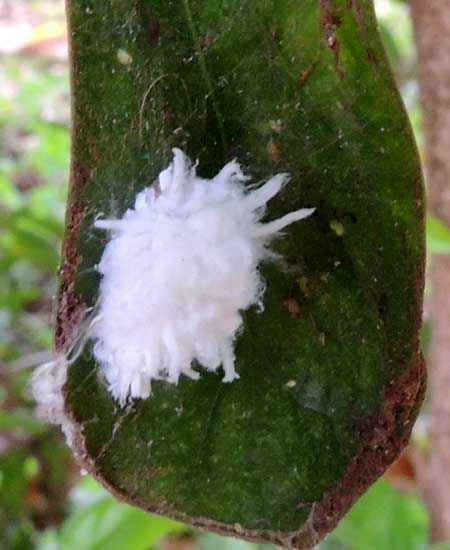Giant Mealybug

Observed on Kei Apple -- Dovyalis caffra. Moshi, Tanzania, Dec. 2013. Length is about 6mm.
Mealybugs have very, very short legs. If nudged gently they will reluctantly start crawling away. So it would seem that they would be entirely vulnerable to insect-eating birds, lizards and spiders. Their abundance belies this notion. Indeed they have several good tricks to survive and reproduce. What makes them mealy is a coating of wax particles secreted by glands on the abdomen which apparently makes them unpalatable to many predators. Mealy bugs also secret sugary substances that attract ants that serve as stinging, biting body guards.
Some mealybug species are very specific as to the species of plants used while other mealybug species have specific hosts. Despite their defenses the many kinds of mealybugs are parasitised by a variety of very small wasps and preyed upon by lady bird beetles and lacewings. Mealybugs often become conspicuously abundant on house plants and in greenhouses because the wasp parasitoids are not able to function or are absent.